Carving Item Number: Na1409 a-f from the MOA: University of British Columbia
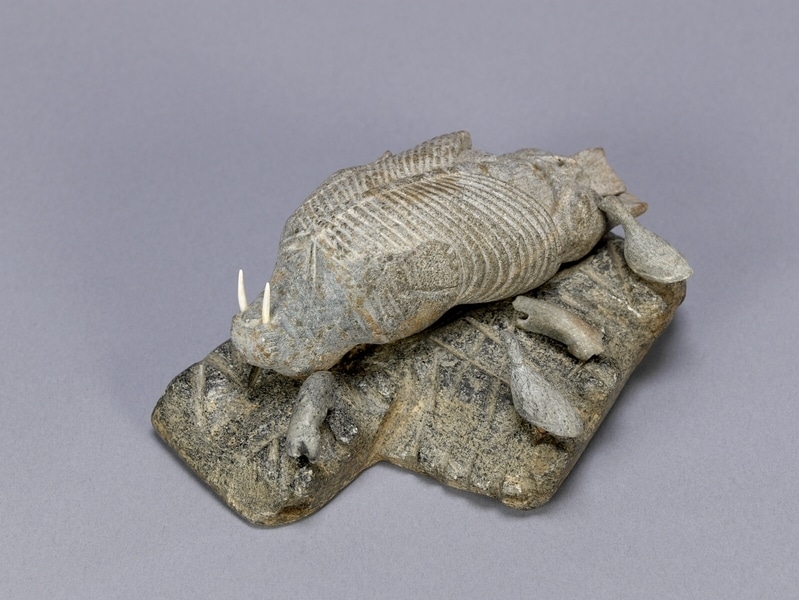
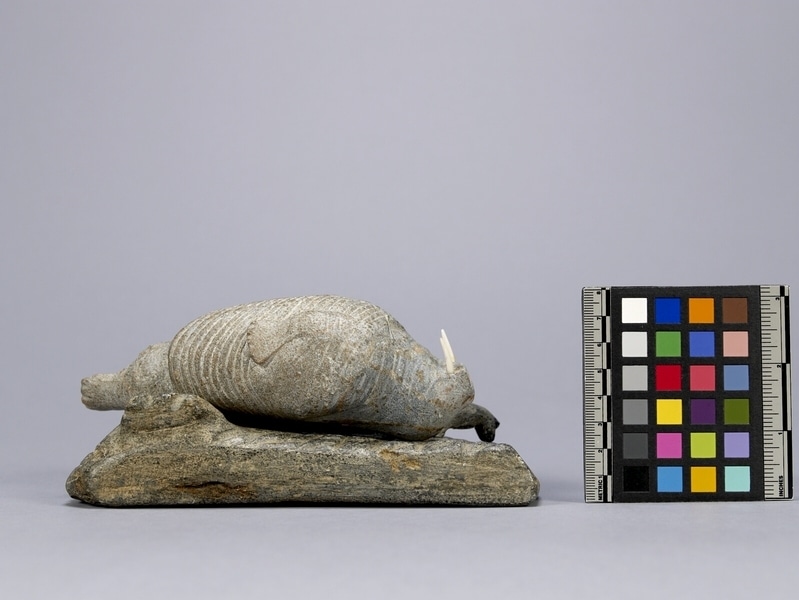
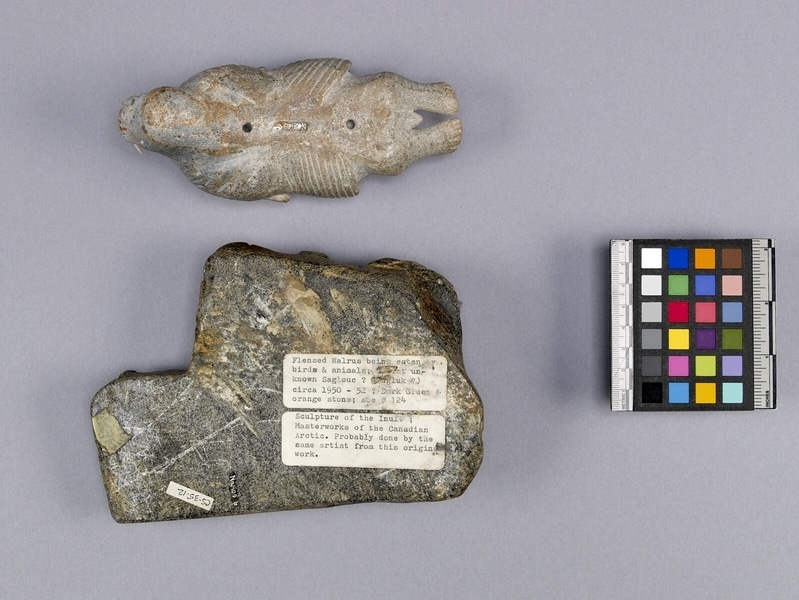
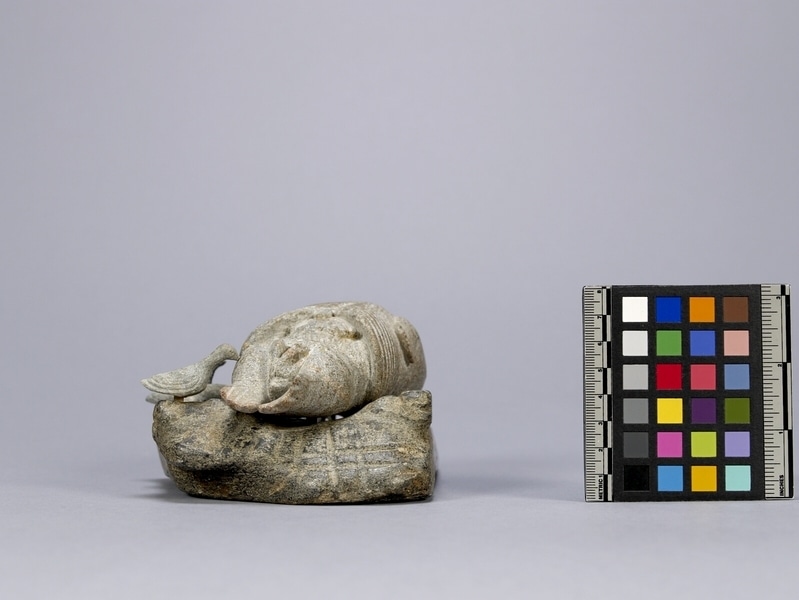
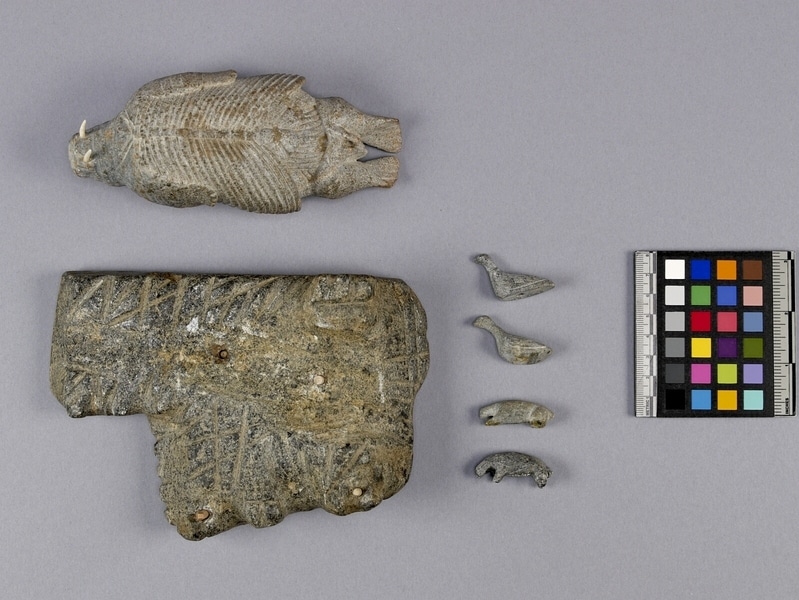
Description
Partially flensed walrus (part a) lying on back and pegged to a concave channel in platform (part b). Two birds (parts c and d) are pegged to one side of the platform. Two small animals (parts e and f) are moveable. The walrus has ribs, sternum and entrails that are partially exposed. Tusks extend out from corners of down turned mouth below flat snout. Dots for eyes and notches at nostrils. Flippers on sides and in concave shape at back below exposed pubic area. Two holes at centre back are for pegs. Platform has three straight sides and a corner missing from one side. Angled edge on short side, and in from this edge. Cross-hatched grooves on uneven surface and higher area at one corner and along opposite side. Seated bird (part c) is slightly bent over, whereas the other bird (part d) has an upright head and is darker. One animal (part e) is a quadruped with front legs stretched more than the other animal (part f) which is darker. One wooden peg is stuck on b (for a). Other pegs are removable. Resin-like adhesive and sticker on bottom.
History Of Use
Contemporary Inuit sculpture produced for the art market began in the 1950's in response to a very successful sale, by the Canadian Handicraft Guild in Montreal in 1949, of pieces collected by James A. Houston on the east coast of Hudson Bay. The Inuit co-operatives developed by 1959 and a central marketing agency was established in 1965. Carving continues to be a major source of income in the Eastern Canadian Arctic, an area which has undergone major social and economic changes, especially since World War II. There has been a steady growth in permanent settlements during the last half of this century which has made large scale carving in stone feasible. Traditionally, carving materials were mainly bone, antler, and ivory, because of their light weight, strength, and durability. Heavier and more fragile stone was used primarily for lamps and cooking vessels. Although Inuit sculpture is often referred to as 'soapstone' sculpture, in fact, less than half of the stone used is soapstone (a high-grade talc or steatite). Other stones commonly used include serpentine, olivine, periodite, chrysolite, and others. In the early years of the industry it was possible to identify where a carving came from by the specific type of stone used, however, in recent years stone is traded on a wider, regional basis. Whale bone, antler, walrus tusk ivory, and a variety of other materials are also used by Inuit carvers. Themes in Inuit sculpture are based on personal experiences and beliefs, derive from oral traditions, mythology, as well as from narrative and figurative themes depicting arctic fauna and scenes of traditional Inuit life. Regional, community, and individual styles are also apparent.
Narrative
Balshine family collection.
Cultural Context
contemporary art
Item History
- Made in Salluit, Quebec, Canada during 1955
- Collected between 1969 and 1982
- Owned by Lorne Balshine before January 25, 1988
- Received from Lorne Balshine (Seller), Finning Ltd. (Funding source) and University Purchase (Funding source) on January 25, 1988
What
Who
- Culture
- Inuit
- Previous Owner
- Lorne Balshine
- Received from
- Lorne Balshine (Seller), Finning Ltd. (Funding source) and University Purchase (Funding source)
Where
- Holding Institution
- MOA: University of British Columbia
- Made in
- Salluit, Quebec, Canada
When
- Creation Date
- during 1955
- Collection Date
- between 1969 and 1982
- Ownership Date
- before January 25, 1988
- Acquisition Date
- on January 25, 1988
Other
- Item Classes
- carvings & sculpture
- Condition
- good
- Current Location
- Case 46
- Accession Number
- 1263/0239 a-f